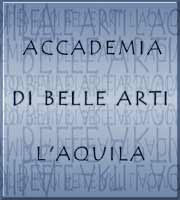| The 3D Computer Graphic allows to simulate a perfectly three-dimensional scene and to observe it from whichever point of view, in the same moment of an action. The 3D simulation moreover let to operate only in a second time in the reality, avoiding errors and wastes of resources. The advantages of a such simulated manipulation of a true scene reconstructed with the computer are obviously enormous. There are many analogies between the management of a 3D simulation, carried out through computer, and a theatrical or cinematographic Stage Design, even if the computer offers to the operator some instruments really more advanced regarding these other disciplines, that on the contrary operate in the true world. Particularly common both to the 3D Computer Graphic and to the Cinema and the Theatre is the notion of Scene, that in all these three disciplines it represents the place where the action is carried out or where the attention of tyhe observer is turned. In fact the 3D Computer Graphic can simulate whichever thing, eithr if it exists or if it does not exist in the reality, so that it is able, in primis to resolve an eventual problem of shape or structures, and only later to decide the materials more adapted to that use. Therefore the encounter between these two disciplines, the Stage Design and the 3D Computer Graphic, can give some undeniable advantages above all to who must subsequently operate in the reality, like the scene-designer or the set-designer. All the attempts of construction of a scene can be simulated with the computer and quite viewed from points of view practically impossible to see in the reality, but sometimes useful in order to resolve some problems (like the vision from the point of view of a light in the scene in order to control its correct guideline). All this before generating really the scene, that it will come then constructed in the reality only in the final stage, when the simulation 3d will have satisfied all the requirements of the set-designer and of the director, with an enormous saving of physical and economic resources. Thanks then to the advent of the World-Wide network of Internet have fallen the space barriers that they prevented to operate in real time in places situated to remarkable distances between them. Therefore the set-designer or the scene-designer will be able today, through the computer, to receive orders and instructions from the director or the customer through e-mail, to gradually develop to the required scene in 3D simulation to the computer, bringing all the necessary modifications, asking, always through email, the advices of his eventual collaborators, and to send finally the prints and the final project, or even a motion clip of the stage design, to the director and to the customer, without muoving from the place where his computer is placed, that is his office or his home. All this increases in an exponential way the possibility to work for the scene-designer, independently from the place where resides himself, who works with him and who orders him the job. This is possible today thanks to the computer and to 3D Computer Graphic. Therefore the purpose of the present course is that one to form a new generation of Scene-Designers, able to use in their job the new technologies and to keep up with the level of formation of the more advanced countries of the world, in which the use of the techniques of 3D Computer Graphic applied to the Stage Design, already constitutes from some year an indispensable instrument of work. The 3D program used for this experimental course is "Lightwave 3D" ©. It is one of the most important 3Dprograms of the whole world, used from years in a lot of cinematographic, television and theatrical productions. The extreme versatility and the practical and much diffuse use, to world-wide level, of this 3D program has directed the choice about its employment like the instrument of work of this Course of study. It is not required any previous detailed knowledge of the computer or some preparation in 3D Computer Graphic from the students enrolled to the course, even if obviously a basic and general elementary acquaintance of the computer can facilitate the approach towards these new technologies. During the development of the Experimental Course the students are shared in differnt working groups, everyone of which will complete, at the conclusion of the cycle of studies, just an original and suit project of 3D virtual Stage Design, meant as formulation of the Project (Storyboard), modelling of original 3D objects, creation of the 3D Stage Design and final Rendering of Images and Animation related to the Project. |





